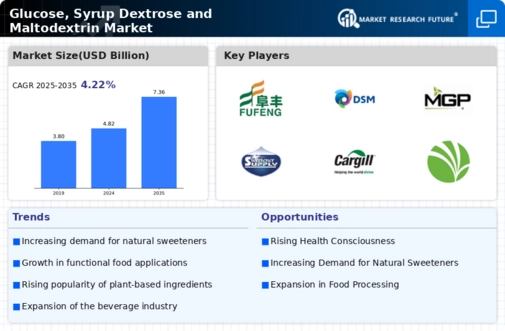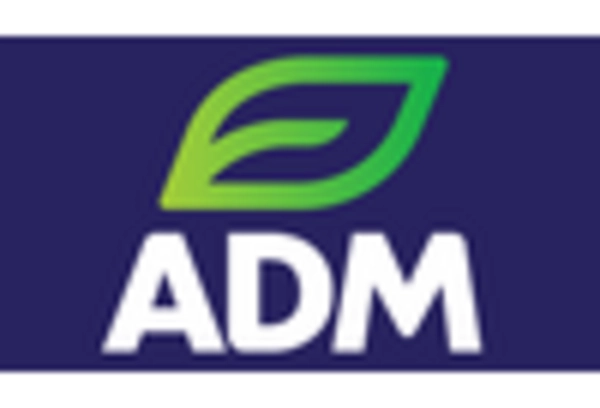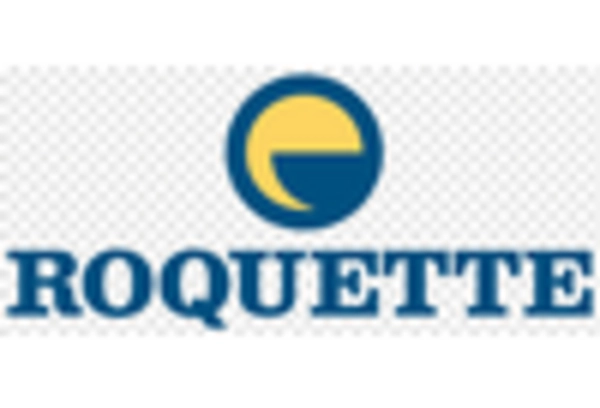Health and Wellness Trends
The Glucose, Syrup Dextrose and Maltodextrin Market is significantly impacted by the rising health and wellness trends among consumers. As individuals become more health-conscious, there is a growing preference for products that offer functional benefits, such as energy provision and improved digestion. Glucose and maltodextrin are often marketed as energy sources for athletes and active individuals, contributing to their popularity in sports nutrition products. Market Research Future indicates that the sports nutrition segment is expected to grow at a CAGR of around 8% over the next five years, further driving the demand for glucose and syrup dextrose in this niche. This trend highlights the evolving consumer landscape and the need for manufacturers to adapt their offerings accordingly.
Rising Demand for Natural Sweeteners
The Glucose, Syrup Dextrose and Maltodextrin Market is experiencing a notable shift towards natural sweeteners as consumers increasingly prioritize health and wellness. This trend is driven by a growing awareness of the adverse effects of artificial sweeteners, leading to a surge in demand for glucose and syrup dextrose derived from natural sources. Market data indicates that the natural sweetener segment is projected to grow at a compound annual growth rate of approximately 6% over the next five years. This shift not only reflects changing consumer preferences but also encourages manufacturers to innovate and diversify their product offerings, thereby enhancing the overall market landscape.
Technological Advancements in Production
The Glucose, Syrup Dextrose and Maltodextrin Market is benefiting from technological advancements in production processes. Innovations in enzymatic hydrolysis and fermentation techniques have improved the efficiency and yield of glucose and maltodextrin production. These advancements not only reduce production costs but also enhance product quality, making them more appealing to manufacturers in various sectors. As a result, the market is witnessing an influx of high-quality products that meet the evolving demands of consumers. Furthermore, these technologies enable the development of specialized products tailored for specific applications, thereby expanding the market's potential.
Expansion of the Food and Beverage Sector
The Glucose, Syrup Dextrose and Maltodextrin Market is significantly influenced by the expansion of the food and beverage sector. As the global population continues to grow, the demand for processed foods and beverages is on the rise. Glucose and syrup dextrose are essential ingredients in various applications, including confectionery, bakery, and dairy products. Recent market analysis suggests that the food and beverage sector is expected to reach a valuation of over 5 trillion by 2026, which will likely drive the demand for glucose and maltodextrin as key components in product formulations. This expansion presents opportunities for manufacturers to capitalize on the increasing consumption of convenience foods.
Increasing Application in Pharmaceuticals
The Glucose, Syrup Dextrose and Maltodextrin Market is witnessing a growing application in the pharmaceutical sector. Glucose and maltodextrin are increasingly utilized as excipients in drug formulations, enhancing the stability and bioavailability of active ingredients. The pharmaceutical industry is projected to grow at a steady pace, with an estimated market size of over 1.5 trillion by 2025. This growth is likely to drive the demand for glucose and syrup dextrose as essential components in various pharmaceutical products, including oral solutions and intravenous therapies. The increasing focus on patient-centric formulations further underscores the importance of these ingredients in the industry.


















Leave a Comment